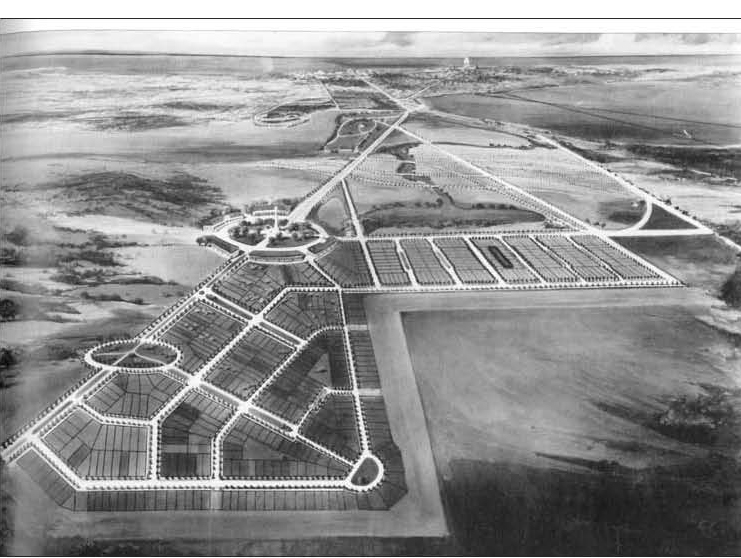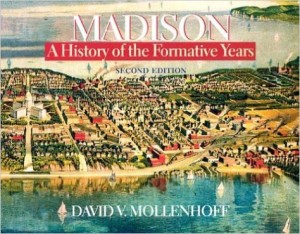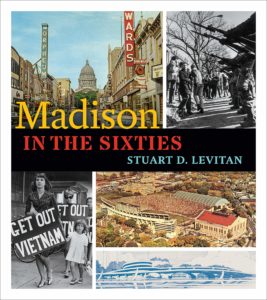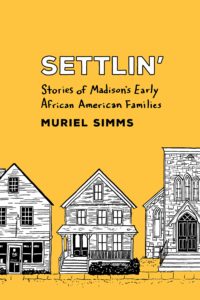Take a fascinating peek into Madison’s past and explore the haunting story of Lake Forest — Madison’s “Lost City” — when you participate in the most unusual walk in the UW-Madison Arboretum repertoire.
In previous years, the free “Tour of the Lost City” was offered once a year, usually around Halloween. Join this year’s “Lost City” tour from 1 p.m. until 3:30 p.m. on Sunday, October 27, 2019 and learn about what Madison historian David Mollenhoff calls “One of the most extraordinary land developments ever launched in Madison.” Due to high demand, a second tour has been added for 2019. The date of the second tour is Sunday, November 3, 2019.
Important Update (9/3/2019): Statement from the UW Arboretum: ” Space is limited, advance registration is required for this free annual event. Registration opens October 1, register by October 23. Meet at the Visitor Center. See also November 3 tour and November 16 class.”
 Lake Forest is a failed 1920s residential area in the midst of the Gardner Marsh section of the Arboretum. If you have some older Madisonians in your tour group, you may hear tales about how this was once a popular parking spot for high school students. Now, however, nature has reclaimed the land and not many traces of the development remain.
Lake Forest is a failed 1920s residential area in the midst of the Gardner Marsh section of the Arboretum. If you have some older Madisonians in your tour group, you may hear tales about how this was once a popular parking spot for high school students. Now, however, nature has reclaimed the land and not many traces of the development remain.
During a 2013 interview on WPR, Kathy Miner, a guide and naturalist at the Arboretum, said, “There are a couple of crumbling foundations in the middle of the woods, and if you know where to find them, you can see moss-covered concrete front steps.” However, since most of what remains of the “Lost City” exists off the Arboretum’s trails, the Arboretum guides try to discourage would-be explorers from attempting a trek on their own.** Hence, this once-a-year special event.
The two-part tour
The “Lost City” tour is in two parts. The first is inside the Arboretum Visitor Center where you’ll hear about the history of the Lake Forest development, probably illustrated with photographs, advertising images, and maps. Arrive early, since seats fill rapidly and illustrated handouts are snapped up with alacrity. The second part of the tour is a trek to see what’s left of the “Lost City.”
If you’re going to participate in this journey into the past, we recommended long pants, long sleeves, good walking shoes, and a certain degree of physical fitness, because this tour goes “off trail” and you may find yourself ducking under (or climbing over) fallen trees, and holding back overhanging branches so fellow tour members can move ahead to reach the remnants of the “Lost City.”
The tour begins at the Arboretum Visitor Center, 1207 Seminole Highway. For additional information, call (608) 263-7888. Directions to the Arboretum are posted on its website.
**Below are links to three reports by people who attempted this trek on their own, as well as one by someone who participated in the tour. The photos and videos should serve as cautionary notes — but they also offer a peek at some parts of the “Lost City” for those of you who are unable to participate in this year’s tour:
Madison’s ‘Lost City’:Inside the forgotten remains of Lake Forest – Feature story by Nolan Ferlec for The Badger Herald on September 13, 2015
“Madison’s Lost City” – Posted on November 12, 2015 by Cait Berry, a great granddaughter of John C. McKenna, who was involved in the Lake Forest development.
Day 177 – Finding the Lost City – posted by Caleb Andrew on November 5, 2013
“Some goons stumbling upon a failed 1916-1921 Madison subdivision” – YouTube video posted October 20, 2012






